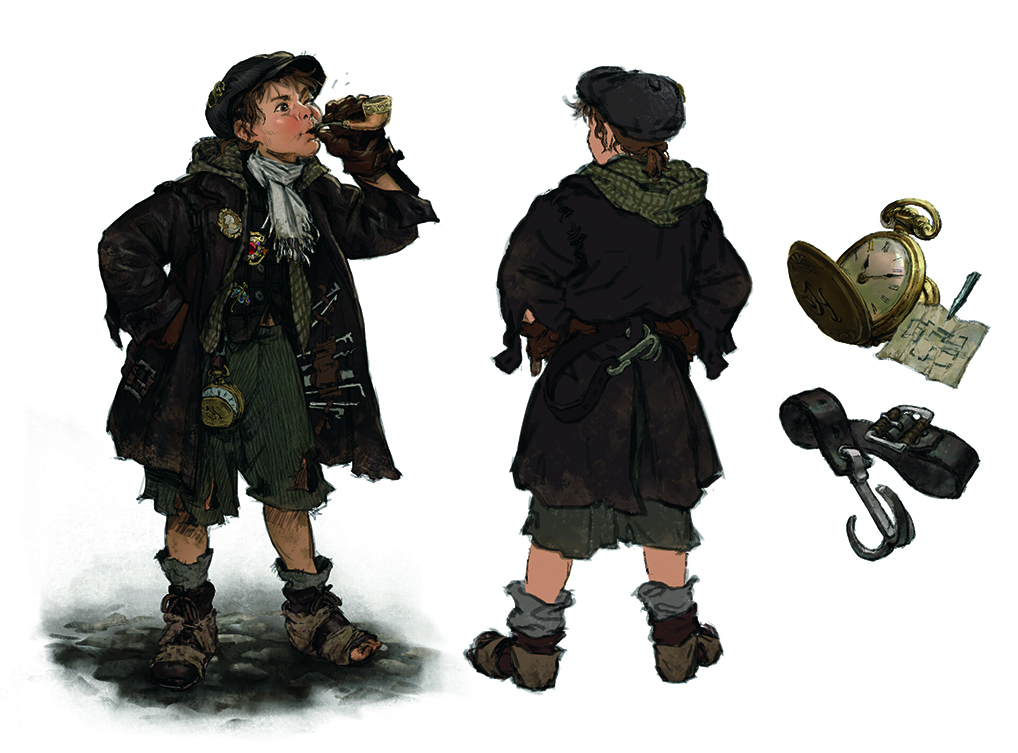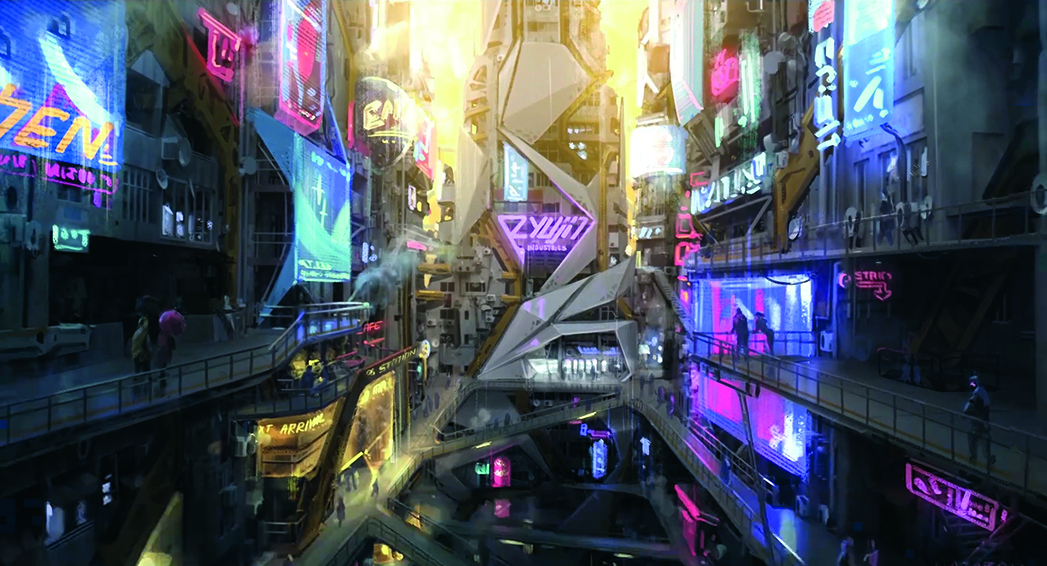The path to the top at a video games company
We find out what it takes to make the leap from student to game-shaping art director, no cheat codes required.

If you love video games, leading a team of exceptional artists to create fantastical new worlds might sound like a dream job. But in an industry that’s more competitive than ever, how can you set yourself apart? And what do you have to do to forge a path to the top of the companies making titles for the best games consoles?
A veteran art director with close to three decades’ experience working on AAA titles such as the God of War series is Cecil Kim. “First off, you should know what area of art production you want to get into,” he says. “It means knowing what you’re passionate about doing.”
Like any career, it’s tricky to work out your specialism at an early stage, but finding the things that are a natural fit for you as soon as possible will make your life much easier. “If you aren’t certain, take some courses and see if you enjoy learning a certain discipline,” advises Cecil. Finding that passion will give you the drive you need to keep learning, discovering, and pushing yourself that bit harder than your peers.
For example, if you’re drawn to worldbuilding or character design, Cecil points out that a “strong interest in world cultures and ancient history” will help you. Reading up on these and other relevant topics might uncover an interest you never knew you had.
The learning journey

It’s also worth noting here that a formal education is by no means a prerequisite for finding success in the games industry. “Times have changed a lot since I was starting out,” reflects Bethesda Game Studios lead artist Alexander Alza. “These days you can absorb so much knowledge for free online. I know people who are self-taught and have had solid careers in the industry.”
While Alexander did study at art school himself, it’s not where he learned how to do his job. “From the start I was a sponge, absorbing all the knowledge,” he recalls. “While I’m appreciative of what I learned at school, most of my modern-day skills were learned on the job, and I’ve thankfully had great leads inspiring me the whole way.” He also notes another key characteristic: “One thing I never stopped doing was learning in my free time. I continue to be curious, exploring new software or techniques that can improve my workflow.”

If you’re lucky enough to land an internship or first job in the games industry, it’s important to be strategic about your professional development and focus on the right things. Beth Hobbs, a senior concept artist at Raw Power Games, tells us: “Juniors should prioritise improving their design abilities and executing thoughtful, purposeful design in their concept artwork. Many inexperienced concept artists will go astray by focusing on creating beautiful images rather than useful images.”
Daily design news, reviews, how-tos and more, as picked by the editors.
Know your role

That’s a situation that can be attested to by Bungie senior concept artist Eric Pfeiffer. “I got my start as a concept artist after working in illustration and comics for a number of years, and I was used to seeing my work as successful when it was polished,” he remembers of making his switch. “I was still hanging on to the mindset of an illustrator.
“In concept art, your job is one of the earliest in the process, but you need to imagine the game as a whole, years down the road. The designs you make will be seen and experienced globally for many years to come, so ultimately no one will care how polished your work was if the design of it was half-baked. Having designs that are hard to read or hard to remember has real consequences for a game’s identity, so that should be the priority to focus on.”
Another piece of advice that both Beth and Eric agree upon is the need for originality in your artwork. Beth stresses: “I can’t emphasise this enough: look outside of ArtStation when seeking inspiration!”
Eric also warns newer artists to look further afield. “Try not to pull from the same references as everyone else,” he adds. “If you open up ArtStation, you can see trends immediately. When you’re making a AAA game, it’s important to realise you’re being paid to offer original ideas. It’s our job to build an identity for a franchise that feels unique, so that it will stand out against competition for many years to come. That can be hard to do if you’re always pulling from the same source material as the competition.”
Part of the pipeline

Your designs need to be original, but they also need to be practical. Junior artists will need to get to grips with the technical limitations of other departments that apply to artwork in games. Beth explains: “A characterrelated example would be that long, flowing fabrics might not work with a rig or animation, and wholly bespoke outfits might not fit in with the 3D production timeline. This would mean you’re now restricted to more formfitting outfits and recycling assets to create your character designs. Understanding the limitations of the other departments that you’re working with means fewer revisions and less of a headache for everyone.”
She also notes that responding appropriately and learning from any feedback is important. Eric’s advice here is to figure out how to be “selfcritical in a healthy way that allows you to grow without feeling either too anxious or defeated by your shortcomings”. He adds: “We all have room to grow, so try to learn how to self-edit without over-encumbering yourself with doubt. Embrace the feedback and be willing to evolve.”
Be a people person

It’s easy to think you need to focus on art abilities above all else, but if you’re not a good person to work with, you won’t get far. Time and again, industry professionals tell us about the importance of interpersonal skills, and how these traits need attention in the same way you focus on your art.
It’s a point that’s enthusiastically echoed by Loric Games art director Ilya Nazarov. “The best skills to work on are communication, problemsolving, and being a team player,” he says. “Art skills come a close second. Working on games is a collaborative effort and some of the best work is the result of multiple talented people working on a creative problem together.”
And remember that being eager to progress doesn’t mean losing your humility; you can be confident and humble at the same time. Eric says: “Enter a project with an open mind, and be ready to absorb the ideas and ways of working that were established before you,” he says. “Show up with humility and understand that you have a lot to learn from the wide array of talent you get to interact with.
“Ambition doesn’t mean disruption. Don’t think you have to reinvent everything to prove your value. Your value should be additive; try to build on what was established and see how you can add to it. Ultimately, it’s vital to be a team player and understand the end goal is the player experience.”
Taking the lead
When you get your chance to move up to an art lead role, Alexander says it’s vital to be an available and clear communicator, while serving as a guiding hand. “Be involved in many conversations, and have your eyes on other departments as well,” he says.
“The most important thing is trusting the talent working with you. Remember, you’re in service of the artists, and you’re there to make their lives easier. Guiding, challenging and listening to your team is huge, but ultimately, let your artists contribute their own magic to the formula and they’ll feel more ownership and artistic satisfaction, which results in a better overall product.”
This content originally appeared in ImagineFX magazine, the world's leading digital art and fantasy art magazine. ImagineFX is on sale in the UK, Europe, United States, Canada, Australia and more. Limited numbers of ImagineFX print editions are available for delivery from our online store (the shipping costs are included in all prices).

Tanya is a writer covering art, design, and visual effects. She has 16 years of experience as a magazine journalist and has written for numerous publications including ImagineFX, 3D World, 3D Artist, Computer Arts, net magazine, and Creative Bloq. For Creative Bloq, she mostly writes about digital art and VFX.
